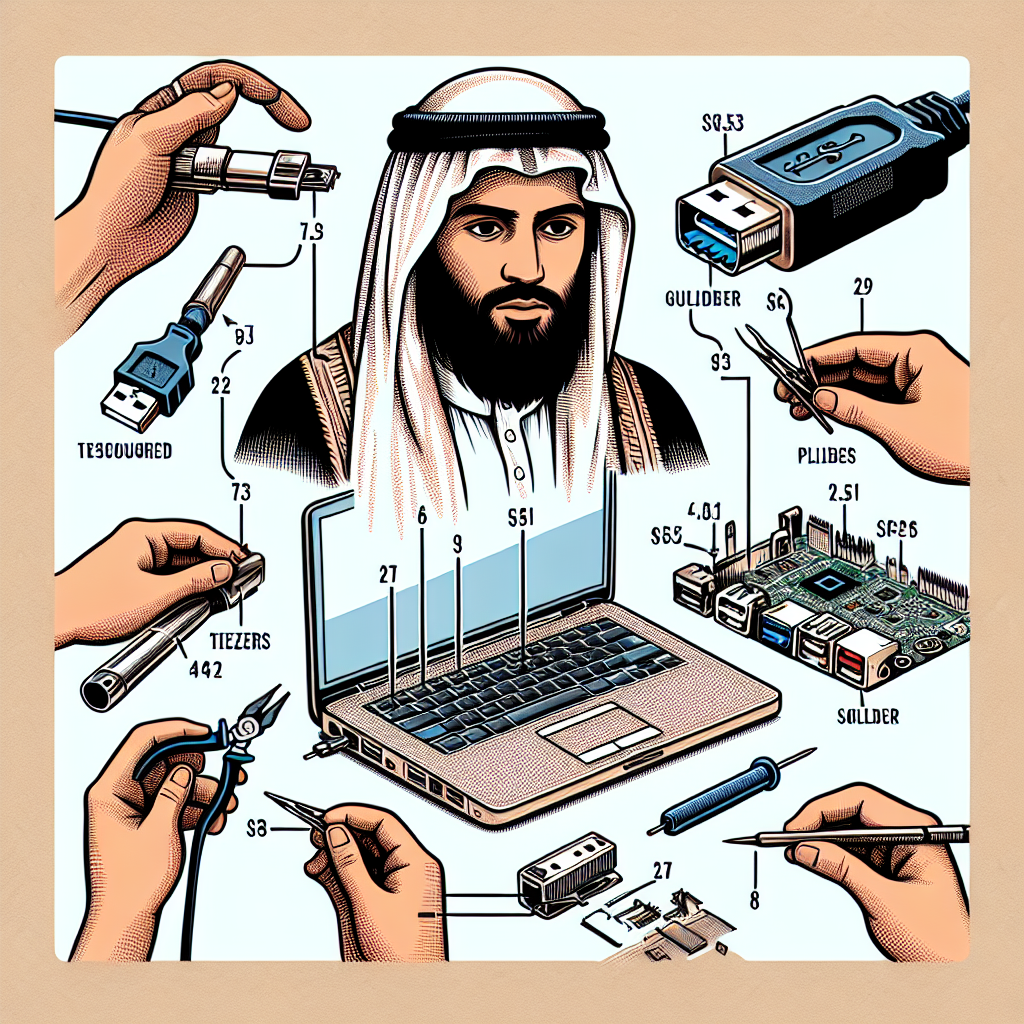
How to fix usb port
The Ultimate Guide on How to Fix a USB Port
USB ports are an integral part of modern devices, enabling data transfer and power supply to a plethora of gadgets. However, issues with these ports can be frustrating, leaving users puzzled and annoyed. If you’ve found yourself in a position where a USB port is not functioning as it should, you’re not alone. This guide will explore various troubleshooting steps and DIY repair options, providing you with insights on **how to fix USB port** issues effectively.
Understanding USB Port Problems
Before diving into solutions, it's essential to understand why USB ports may stop working. Several factors could be at play:
- Physical Damage: Ports can wear out or get damaged due to improper use or excessive force with connectors.
- Driver Issues: Faulty drivers can disrupt communication between the USB device and the computer.
- Power Supply Problems: Insufficient power can lead to devices being unresponsive when connected via USB.
- Software Conflicts: Operating system bugs can interfere with USB functionality.
- Corrosion: Dust, dirt, and moisture can corrode the port and connectors, affecting performance.
Basic Troubleshooting Steps
Before delving into more technical solutions, basic troubleshooting can often resolve USB port issues. Follow these steps:
1. Check the Device
Sometimes, the issue may not be with the USB port but with the device being connected. Try the following:
- Connect the USB device to another PC to see if it functions correctly.
- Test different USB ports on your computer with the same device.
2. Restart Your Computer
A simple restart can refresh the system, often fixing temporary glitches that may affect USB functionality.
3. Inspect the USB Cable
Verify that the USB cable is not damaged. Frayed or bent cables can lead to connectivity issues.
Checking Device Settings
After basic troubleshooting, examining device settings can help pinpoint USB port problems. Here’s how:
1. Verify Device Manager in Windows
Access the Device Manager by following these steps:
- Press Windows Key + X.
- Click on Device Manager.
- Look for Universal Serial Bus Controllers.
If you see any warnings or errors, right-click the problematic device and choose Update Driver.
2. Check Power Management Settings
Sometimes, the power management settings can disable USB ports to save power. Here’s how to check:
- In Device Manager, right-click on the USB Hub and select Properties.
- Go to the Power Management tab.
- Uncheck Allow the computer to turn off this device to save power.
Advanced Fixes for USB Port Issues
If your USB port still isn’t working after basic troubleshooting, some advanced fixes can be attempted.
1. Clean the USB Port
Dust and debris accumulation can hinder the connection. Here’s how to clean the USB port safely:
- Turn off and unplug your device.
- Use a canned air duster to blow out any dust.
- For stubborn debris, use a small toothbrush or toothpick to gently clean without damaging the port.
2. Update or Reinstall USB Drivers
If the drivers are outdated or corrupted, you can either update or reinstall them:
- In Device Manager, find the USB controller.
- Right-click and choose Update Driver or Uninstall Device (this removes the driver; it will reinstall automatically after a reboot).
3. Check for Operating System Updates
Sometimes, software updates from the OS can resolve USB-related bugs. Make sure your operating system is up-to-date by navigating to the settings and checking for updates.
Hardware Repairs
If all else fails, the issue could be hardware-related. There are a few options to consider before seeking professional help:
1. Reseating Internal Connections
For laptops and some desktops, it’s possible to reseat the USB port connections. This can be a bit tricky and requires opening up the device:
- Turn off and unplug the device.
- Open the casing according to the manufacturer’s instructions.
- Locate the USB port and ensure it is securely connected to the motherboard.
Make sure to proceed cautiously, as improper handling could void warranties or cause further damage.
2. Use a USB Hub or Expansion Card
If you frequently encounter issues with USB ports, consider using a USB hub or installing an expansion card in your desktop. These options can provide additional functionality and may resolve the problem temporarily while seeking a permanent fix.
When to Seek Professional Help
While many USB port issues can be solved by following the methods mentioned, there are times when it’s best to seek professional assistance:
- If you are experiencing persistent issues across multiple devices and USB ports, it may indicate a larger problem with your computer.
- In cases of physical damage, especially on built-in ports of laptops, professional repairs can minimize the risk of making the problem worse.
- If you're uncomfortable opening your device or it may void the warranty, don't hesitate to seek expert help.
Conclusion
Dealing with malfunctioning USB ports can be a hassle, but there are numerous solutions at your disposal. From basic troubleshooting to hardware repairs, understanding the root causes can make it easier to address the situation effectively. Remember, if your attempts remain unsuccessful, it’s always wise to consult a professional technician. Now that you know **how to fix USB port** issues, you’ll be better equipped to tackle any future problems with ease.
“The right way to fix things is to understand the issue and approach it methodically.”
With a systematic approach and the right tools, you'll have your USB ports running smoothly in no time!
By Guest, Published on October 11th, 2024